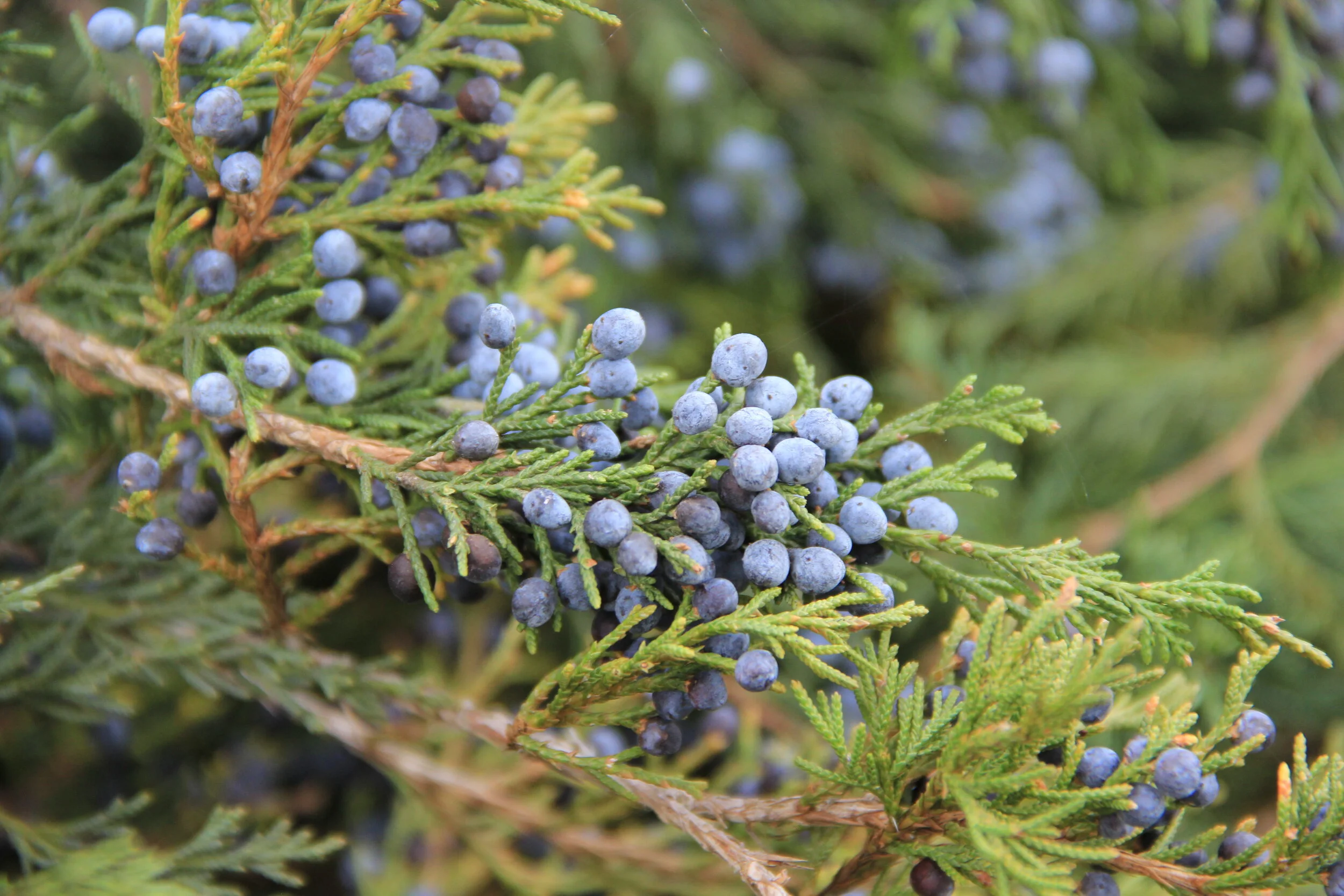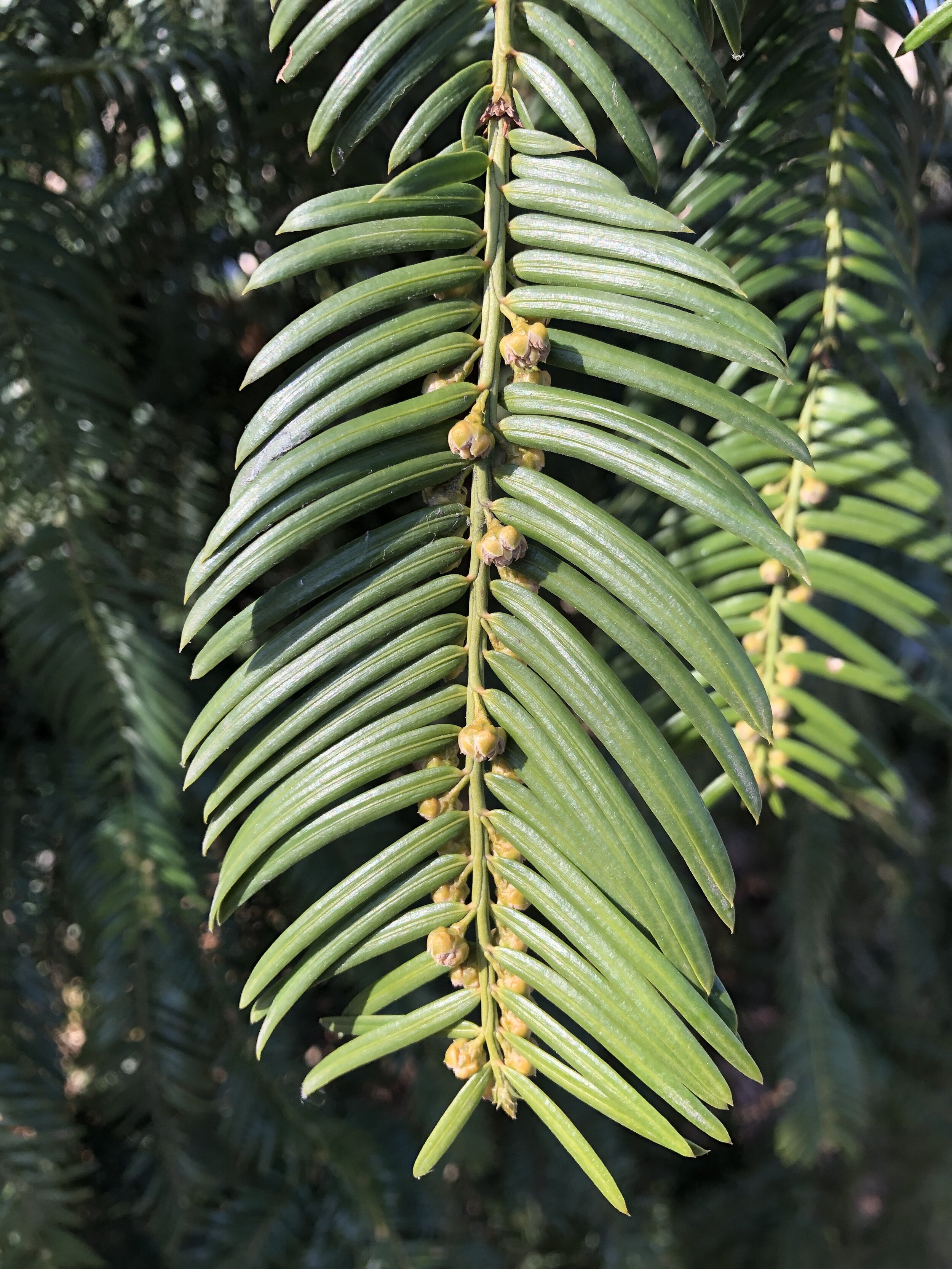Incredible Conifers
OSGF
In the colder months when most plant life is bare, our eyes are drawn to conifers: the evergreen pines, cypresses and other common species that bring flashes of color to our backyards and forests. Ordinary though they might seem, this family of trees still holds surprises for researchers - among them several friends of the Oak Spring Garden Foundation.
OSGF president Dr. Peter Crane, along with Dr. Fabiany Herrera and Dr. Patrick Herendeen of the Chicago Botanic Garden and several other scientists, recently published a paper on a newly discovered extinct species of conifer that they named “Krassilovia” (you can read the paper online in the PLOS ONE scientific journal.)
Interesting conifer sighting: Peter Crane snapped these photos of a Chinese Plumb Yew (left) and an Umbrella Pine (right) during a trip to the National Museum of Natural History in Washington, D.C. “It was very nice to see two interesting conifers planted on the west side of the Museum,” writes Peter. “The Chinese Plum Yew - Cephalotaxus fortunei - native to China and northern Myanmar and the Umbrella Pine - Sciadopitys verticillata - native to Japan. In both cases the close ups show the performed pollen cones that will expand and release their pollen inputs in a few months.”
Dr. Herrera, who spent three years as a fellow at OSGF doing paleobotanical research with Dr. Crane, wrote a guest blog telling us a little bit more about conifers, and what the discovery of the Krassilovia means for scientists’ understanding of this fascinating group of plants. Scroll down to read more.
Have you ever wondered where spruce, pine, fir, cedar, juniper, redwood, and bald cypress trees came from and how they evolved? This group of plants and their relatives, together known as “conifers”, are common trees of backyards and gardens, and in the wild cover vast expanses of the Earth’s surface, especially in Canada and Russia. They include some of the most important trees for timber and also for making paper. With several hundred species, conifers are the second most diverse group of seed plants after flowering plants. Conifers first appeared around 300 million years ago, but many have also gone extinct, and understanding those extinct forms is crucial to learning their long evolutionary history.
Seed cones, cone axis, bract-scale complexes, and winged seeds of Krassilovia mongolica and associated leaves of Podozamites harrisii.
Conifers typically have evergreen leaves, and woody or sometimes fleshy, seed cones. The origin of these seed cones has fascinated scientists for nearly a hundred years, and it has also been important in trying to understand how different kinds of conifers, and other groups of seed plants, relate to each other. Analyses of the DNA extracted from conifers are also widely studied to address these questions in a similar way to the use of DNA to understand human family trees. Current hypotheses suggest that living conifers can be divided into six evolutionary lineages or botanical families. But surprisingly, according to DNA data, Gnetales, a small group of rather obscure plants, appear to be very closely related to conifers. This hypothesis implies that the origin of conifers is more complicated than we ever thought and raises the question about whether any evidence from the fossil record might shed any additional light on the ancestry of conifers or Gnetales.
Reconstruction of a branch of Krassilovia mongolica bearing terminal seed cones and alternately arranged leafy shoots of Podozamites harrisii.
In a recent issue of the science journal PLOS ONE, Chicago Botanic Garden paleobotanists, Drs. Fabiany Herrera and Patrick Herendeen, Dr. Peter Crane (Oak Spring Garden Foundation), and other international scientists reported a new and unusual extinct conifer that goes back to the Mesozoic (the Age of Dinosaurs) – which they named “Krassilovia” after the Late Russian paleobotanist Valentin Krassilov. Understanding this new conifer required an intensive study of thousands of fossil leaves, cone scales, seeds, and other plant parts from Mongolia and China. Although about 120 million years old, many of these fossils are exquisitely preserved. Krassilovia had linear leaves that are relatively broad and multiveined compared to most living conifers. The small breathing pores in their leaves, known as stomata, were unlike all other extinct and living conifers, but intriguingly, were more similar to the stomata seen in Gnetales. Recognizing such an unusual feature in Krassilovia, and also in a few of its fossil relatives provides a previously unrecognized point of similarity between a fossil conifer and Gnetales, and perhaps a clue for helping understand a possible close relationship between these two groups of living plants.
Funding for this work was provided by National Science Foundation grants (DEB-1748286; 1348456) and the Oak Spring Garden Foundation.
https://journals.plos.org/plosone/article?id=10.1371/journal.pone.0226779
Thank you to Dr. Herrera for contributing this blogpost! You can read more about him and the Chicago Botanic Garden here.
Want to read more about conifers? Dr. Peter Crane was recently interviewed by The Washington Post for an article about the Wollemi pine - the “dinosaur tree” Australian firefighters are working to protect.




